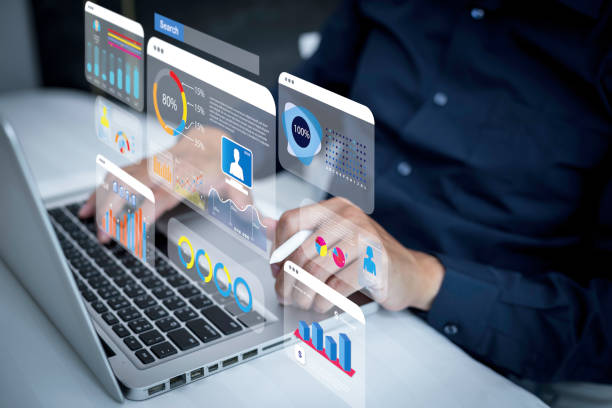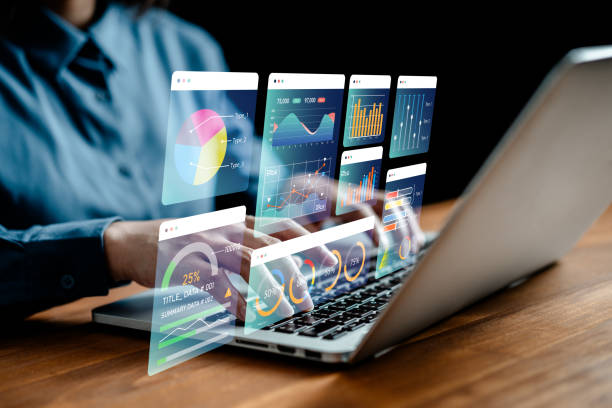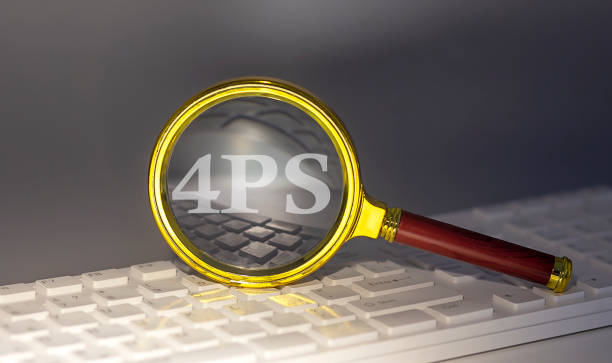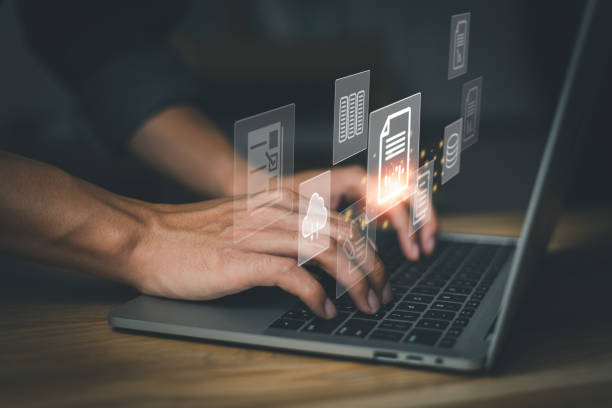What is On-Page SEO and why is it important?

What is On-Page SEO and why is it important?
On-Page SEO is a collection of techniques and actions performed within your website to improve its ranking in search engines like Google.
This includes optimizing content, site structure, HTML tags, and other internal elements of the website.
The importance of On-Page SEO stems from its direct impact on how search engines understand the content and its relevance to user queries.
Without a strong On-Page SEO strategy, even the best content may not be visible in search results.
#OnPageSEO helps improve User experience User experience, which is itself an important factor in ranking.
In other words, On-Page SEO helps search engines understand what your website is about and what value it provides to users.
By optimizing internal factors, you can increase your chances of achieving a higher ranking in search results and attracting organic traffic.
An On-Page SEO strategy should include keyword research, optimizing title and meta descriptions, improving URL structure, and internal linking.
Additionally, ensuring high site loading speed and mobile compatibility are also important aspects of On-Page SEO.
By understanding and correctly implementing these techniques, you can significantly improve your website’s performance in search engines.
On-page SEO helps the site to be seen in search results and attract more traffic.
For businesses looking to increase online visibility, On-Page SEO is a necessity.
Research shows that 80% of customers trust companies with professional websites more. Does your current website inspire this trust?
With Rasaweb’s corporate website design services, solve the problem of customer distrust and weak online image forever!
✅ Create a professional image and increase customer trust
✅ Attract more sales leads and grow your business
⚡ Get a free consultation
Keyword Research: The Foundation of On-Page SEO

Keyword Research: The Foundation of On-Page SEO
Keyword research is the first and most important step in any On-Page SEO strategy.
This process involves identifying the words and phrases that users use to search for information related to your business.
Several tools such as Ahrefs, Moz Keyword Explorer, and Ubersuggest can help you find the right keywords.
When researching keywords, pay attention to search volume, competition, and the relevance of the keyword to your site’s content.
Using long-tail keywords can help attract more targeted traffic.
After identifying keywords, you should strategically use them in your website content.
This includes using keywords in titles, meta descriptions, URLs, the main text of pages, and image alt tags.
But be careful to avoid keyword stuffing, as this can lead to Google penalizing the site.
Your content should be natural and valuable to users, and keywords should be included logically.
Accurate keyword research can help you produce content that answers user questions and meets their needs.
Optimizing Content for Search Engines and Users

Optimizing Content for Search Engines and Users
Content is king! This phrase is often heard in the world of On-Page SEO, and it’s true.
High-quality, valuable, and relevant content plays a key role in attracting and retaining users, as well as achieving better rankings in search engines.
When producing content, pay attention to the following points:
Providing Accurate and Complete Information
Make sure the information provided is accurate, up-to-date, and complete.
Use reliable sources and answer user questions comprehensively.
Your content should be able to meet users’ information needs and encourage them to revisit your site.
If your content is incomplete or incorrect, users will quickly leave your site, which will negatively impact your site’s ranking.
Proper Content Structuring
Use titles, subtitles, paragraphs, and lists to structure the content.
This helps users easily scan your content and find the information they need.
Proper structuring also helps search engines better understand your content and rank it correctly.
Using images, videos, and infographics can also help make your content more engaging and understandable.
Using Keywords Naturally
Use keywords naturally and logically in your content.
Avoid keyword stuffing, as this can lead to Google penalizing the site.
Keywords should be included in the content in a way that helps improve readability and understanding.
Also, pay attention to the diversity of keywords and use synonymous and related keywords as well.
| Element | How to Optimize |
|---|---|
| Page Title | Use the main keyword, be attractive and short |
| Meta Description | Brief and attractive description of the content, encouraging clicks |
| URL | Short, relevant, and containing the keyword |
| H1-H6 Tags | Use keywords in titles and subtitles |
| Main Text | Natural use of keywords, valuable content |
Content optimization is one of the most important factors in On-Page SEO.
Search engines are looking for content that is useful and relevant to users.
By providing high-quality and valuable content, you can improve your site’s ranking in search results and attract more traffic.
Optimizing HTML Tags: Keys to Ranking

Optimizing HTML Tags: Keys to Ranking
HTML tags play an important role in On-Page SEO.
These tags help search engines understand the structure and content of the page.
The most important HTML tags that should be optimized are:
Title Tag
The title tag is one of the most important factors in On-Page SEO.
This tag is displayed in the browser’s title bar and in search results.
The title tag should be short, attractive, and include the main keyword.
The length of the title tag should not exceed 60 characters to be fully displayed in search results.
Meta Description Tag
The meta description tag is a brief description of the page’s content.
This tag is displayed in search results below the page title.
The meta description tag should be attractive and persuasive, encouraging users to click on your site’s link.
The length of the meta description tag should not exceed 160 characters.
Heading Tags (H1-H6)
Heading tags are used to structure content and specify titles and subtitles.
The H1 tag is the most important heading tag and should include the main keyword.
Use H2-H6 tags to specify subtitles.
Using heading tags helps search engines better understand the structure of your content.
Image Alt Tag
The image alt tag is used to provide textual descriptions for images.
This tag helps search engines understand the content of the images.
The image alt tag should be descriptive and include the relevant keyword.
Also, the image alt tag is usable for users who cannot see the images (such as blind users).
By optimizing HTML tags, you can help search engines better understand your site’s content and improve your site’s ranking in search results.
This optimization plays an important role in the On-Page SEO of the site.
Did you know that 94% of users’ first impressions of a business are related to its website design? With professional corporate website design by **Rasaweb**, turn that first impression into an opportunity for growth.
✅ Attract more customers and increase sales
✅ Create credibility and trust in the eyes of the audience⚡ Get a free website design consultation!
Friendly URL Structure: A Way to Improve On-Page SEO

Friendly URL Structure: A Way to Improve On-Page SEO
Your site’s URL structure plays an important role in On-Page SEO.
SEO-friendly URLs are URLs that are short, descriptive, and include relevant keywords.
A friendly URL helps users and search engines understand the content of the page.
Features of a Friendly URL
Short and Concise
Short and concise URLs are easy to read and remember.
Avoid using long and complex URLs.
Descriptive
The URL should clearly describe the content of the page.
Avoid using meaningless codes and random numbers in the URL.
Including Keywords
The URL should include keywords related to the content of the page.
This helps search engines better understand the topic of the page.
Using Hyphens (-) Instead of Spaces
Use hyphens (-) to separate words in the URL.
Search engines consider hyphens as word separators.
Using Lowercase Letters
It is better to use lowercase letters in the URL.
Some servers are sensitive to uppercase and lowercase letters and may not correctly identify URLs with uppercase letters.
By creating friendly URLs, you can help improve your site’s On-Page SEO.
Friendly URLs help users and search engines better understand the content of the page and increase your chances of achieving a higher ranking in search results.
On-Page SEO requires attention to detail, and URL structure is one of these important details.
Internal Linking: Creating Connections Between Site Pages

Internal Linking: Creating Connections Between Site Pages
Internal linking means creating links between different pages of your website.
This helps search engines better understand the structure of your site and identify more important pages.
Internal linking also helps users easily navigate your site and gain more information.
Benefits of Internal Linking
Improving Site Structure
Internal linking helps search engines better understand the structure of your site and identify more important pages.
Increasing the Credibility of Important Pages
By linking from less important pages to important pages, you can increase the credibility of important pages and increase their chances of achieving a higher ranking in search results.
Improving User Experience
Internal linking helps users easily navigate your site and gain more information.
This improves user experience and increases the amount of time users spend on your site.
Increasing Site Traffic
By linking from high-traffic pages to low-traffic pages, you can increase the traffic of low-traffic pages.
To do internal linking, you should pay attention to the following:
Linking to Related Pages
Only link to pages that are related to the content of the current page.
Linking to unrelated pages can ухудшить user experience and negatively impact your site’s On-Page SEO.
Using Appropriate Anchor Text
Anchor text is the text that links to another page.
Anchor text should be descriptive and include the relevant keyword.
Avoid using generic anchor text such as “Click Here.”
Internal linking is one of the most important factors in On-Page SEO.
By doing internal linking correctly, you can help search engines better understand the structure of your site and improve your site’s ranking in search results.
On-Page SEO means improving all aspects of the site, and linking is one of these aspects.
Optimizing Images: Increasing Speed and Improving SEO

Optimizing Images: Increasing Speed and Improving SEO
Images play an important role in the attractiveness and engagement of users with your website.
However, unoptimized images can slow down your site’s loading speed and negatively impact On-Page SEO.
Image optimization includes reducing image size, using the appropriate format, and adding a descriptive alt tag.
Reducing Image Size
Image size should be minimized to increase site loading speed.
Use online image compression tools or image editing software such as Photoshop to reduce image size.
Using the Appropriate Format
There are different formats for images, but JPEG and PNG formats are more suitable for web use.
The JPEG format is suitable for images with many colors (such as photos), and the PNG format is suitable for images with few colors (such as logos and icons).
Adding a Descriptive Alt Tag
The image alt tag is used to provide textual descriptions for images.
This tag helps search engines understand the content of the images.
The image alt tag should be descriptive and include the relevant keyword.
Also, the image alt tag is usable for users who cannot see the images (such as blind users).
By optimizing images, you can increase your site’s loading speed, improve user experience, and improve your site’s ranking in search results.
On-Page SEO helps you optimize your site for users and search engines.
| Image Feature | Recommendation |
|---|---|
| File Size | Less than 100 KB (if possible) |
| Format | JPEG for photos, PNG for graphics |
| Alt Tag | Brief and relevant description of the image |
| File Name | Descriptive and includes keywords |
Site Loading Speed: An Important Factor in Ranking

Site Loading Speed: An Important Factor in Ranking
Site loading speed is one of the most important factors in Google’s ranking of a site.
Users expect sites to load quickly, and if your site is slow, users are likely to leave your site.
Google also ranks sites with high loading speeds higher.
Slow site speed negatively impacts On-Page SEO.
Factors That Affect Site Loading Speed
Image Size
Large images can slow down site loading speed.
Optimizing images by reducing their size can help improve site loading speed.
Poor Coding
Poor coding and the use of extra code can slow down site loading speed.
Optimizing code and removing extra code can help improve site loading speed.
Using Too Many Plugins
Using too many plugins can slow down site loading speed.
Only use the plugins that are necessary and remove unnecessary plugins.
Choosing the Right Hosting
Choosing the right hosting with high speed can help improve site loading speed.
Choose hosting that has powerful servers and a high-speed network.
To check your site’s loading speed, you can use various tools such as Google PageSpeed Insights and GTmetrix.
By identifying the factors that slow down the site and fixing them, you can improve your site’s loading speed and improve your site’s ranking in search results.
Improving site loading speed is one of the most important actions in the direction of On-Page SEO.
Does your company’s website perform as it deserves your brand? In today’s competitive world, your website is your most important online tool. Rasaweb, a specialist in professional corporate website design, helps you to:
✅ Attract customers’ credibility and trust
✅ Turn website visitors into customers
⚡ Get a free consultation!
Mobile Compatibility: A Necessity for SEO

Mobile Compatibility: A Necessity for SEO
Due to the increasing use of mobile phones to search the internet, mobile-friendliness has become a necessity for On-Page SEO.
Google ranks sites that are mobile-friendly higher.
If your site is not mobile-friendly, you will lose a lot of traffic and your site’s ranking in search results will decrease.
Mobile-friendly sites are very important in On-Page SEO.
Features of a Mobile-Friendly Website
Responsive Design
Responsive design means that your website automatically adapts to the screen size of different devices (such as mobile phones, tablets, and computers).
Using Readable Fonts
The fonts used on the website should be easily readable on small screens.
Avoiding the Use of Flash
Flash is not supported on most mobile devices.
Use HTML5 instead of Flash to create animation and visual effects.
Optimizing Loading Speed
Site loading speed is very important on mobile devices.
Optimize images and use proper coding to improve site loading speed.
To check your website’s mobile compatibility, you can use the Google Mobile-Friendly Test tool.
By fixing compatibility issues, you can improve your site’s ranking in search results and attract more traffic.
Improving site compatibility with mobile is an important step in On-Page SEO.
XML Sitemap: Guide for Search Engines
![]()
XML Sitemap: Guide for Search Engines
An XML sitemap is a file that contains a list of all the pages on your website.
This file helps search engines find and index all the pages on your site.
Having an XML sitemap is essential for On-Page SEO, especially for sites with a large number of pages or a complex structure.
Creating a sitemap helps search engines better understand On-Page SEO.
Benefits of Having an XML Sitemap
Faster Indexing of Pages
An XML sitemap helps search engines index the pages on your site faster.
This is especially important for sites that regularly publish new content.
Identifying Important Pages
Using an XML sitemap, you can show search engines which pages on your site are more important.
This helps search engines prioritize these pages.
Indexing Orphan Pages
Orphan pages are pages that have no internal links to them.
The XML sitemap helps search engines find and index these pages.
To create an XML sitemap, you can use various tools such as XML-Sitemaps.com.
After creating the sitemap, you must register it in Google Search Console.
By doing this, you inform Google that your sitemap is ready and can be used to index your site.
Creating a sitemap is an important step in optimizing On-Page SEO.
Frequently Asked Questions
| No. | Question | Answer |
|---|---|---|
| 1 | What is On-Page SEO? | On-Page SEO refers to a set of actions that are performed within a website and to optimize its pages in order to achieve a better ranking in search results. |
| 2 | What is the most important factor in On-Page SEO? | High-quality, relevant, and comprehensive content that meets the user’s needs is the most important factor in On-Page SEO. |
| 3 | What role does the Title Tag play in On-Page SEO? | The title tag is one of the most important factors that tells search engines and users what the content of the page is about. It should include the main keyword and be attractive. |
| 4 | How important is the Meta Description tag? | Although it does not directly affect the ranking, it is very effective on the click-through rate (CTR) in search results and encourages users to visit the page. |
| 5 | How is image optimization done in On-Page SEO? | By using an appropriate alt tag, compressing the image size to increase loading speed, and naming the image file meaningfully. |
| 6 | What is the importance of using Headings (H1, H2, H3) in On-Page SEO? | Headings help structure content, increase readability, and help search engines understand the hierarchy and subtopics of the content. |
| 7 | What does internal Linking mean and what are its benefits? | Internal linking means creating links between different pages of a website. This helps to distribute credibility, improve user navigation, and help search engine crawling. |
| 8 | Where should the Focus Keyword be placed on the page? | The main keyword should be placed in the title tag, meta description, H1, the first paragraph, and naturally throughout the text and, if possible, in the URL address. |
| 9 | What effect does copied or duplicate content have on On-Page SEO? | Duplicate content can harm a site’s ranking and confuse search engines as to which is the original version, and may detect it as spam. |
| 10 | How important is page loading speed in On-Page SEO? | Page loading speed is an important ranking factor and directly affects user experience. Slow pages increase the bounce rate of users. |
And other services of Rasa Web advertising agency in the field of advertising
Smart UI/UX: A new service to increase click-through rates by optimizing key pages.
Smart Google Ads: Transform campaign management with the help of intelligent data analysis.
Smart Content Strategy: A dedicated service to increase sales growth based on intelligent data analysis.
Smart SEO: An innovative platform to improve online growth with a content-driven SEO strategy.
Smart Linking: A combination of creativity and technology for campaign management by precisely targeting the audience.
And more than hundreds of other services in the field of internet advertising, advertising consulting and organizational solutions
Internet Advertising | Advertising Strategy | Advertorial Report
Resources
HubSpot Marketing Statistics
,Semrush’s Comprehensive On-Page SEO Guide
,Ahrefs On-Page SEO Tutorial
,Moz On-Page Optimization
? Are you ready to grow your business in the digital world? With the comprehensive services of Rasa Web Afarin Digital Marketing Agency, including e-commerce website design and SEO optimization, have a powerful presence in the online market.
📍 Tehran, Mirdamad Street, next to the Central Bank, South Kazerun Alley, Ramin Alley No. 6



